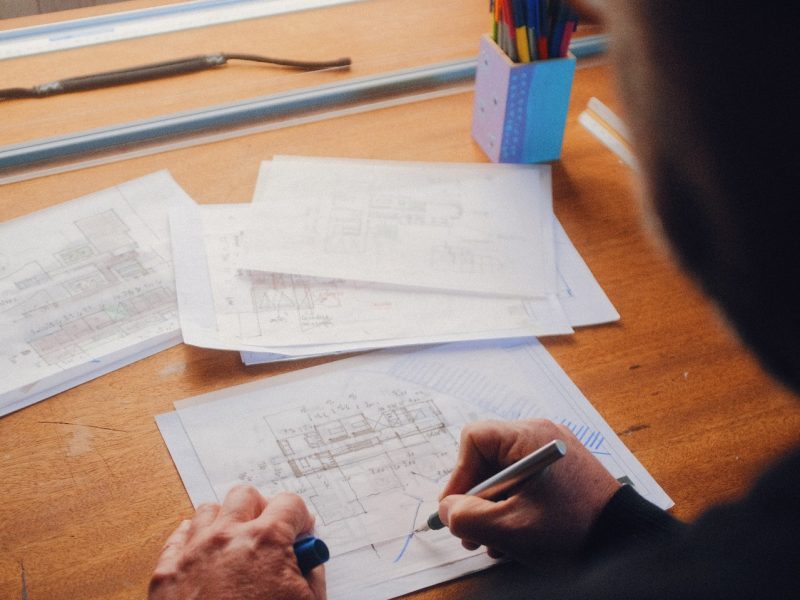In recent years, a lot of emphasis has been put on the construction of ultra-efficient, new-build homes and other buildings, and rightly so. Whilst this remains a core part of our striving towards a greener future, it’s not the only part. By overly focusing on the green credentials of new property, we risk missing out on the benefits of improving existing building stock. The benefits of doing this, in fact, arguably outweigh those of solely investing in the environmental performance of new property. The team here at Munday + Cramer, an architectural design practice particularly interested in seeing more being […]
Tag Archives: Architectural design in Kent
If you’re looking to undertake a project in the South-East, then Munday + Cramer’s architectural design in Kent should be your first port of call. Our practice marries expertise with passion, and creativity with precision. That is, after all, how architecture should always be. As disciplines go, there are few which require such exacting standards as does architecture. The team here at Munday + Cramer has long been undertaking architectural design in Kent and the surrounding counties. If you’re looking for a watermark of quality, then look no further than our practice. If you’d like to find out more about our services, then get in touch now.
There haven’t exactly been many winners over the past year or so. The pandemic has thwarted plans at every turn – across every industry and not just architecture. Our attention has been turned towards the work undertaken by keyworkers, and unquestionably rightly so. The architecture industry has also played an important role, however. The adaptation of healthcare buildings has drastically minimised levels of contact. Similarly, the reshuffling of hospitality settings has meant that they might continue to operate, albeit at reduced capacity in many cases. Such concerted efforts, however, have meant that architects on the entry-level of the field have […]
If ever you’ve had to apply for planning permissions, you’ll know just how nerve-wracking the wait for the results can be. The reason? It’s not at all uncommon for planning applications to get rejected, and planning objections are often the cause. The team here at Munday + Cramer offers both architectural design and building surveying services throughout the entire south-east; we wanted to look at some of the most common valid planning objections cited, as well as the objections typically founded on invalid assumptions/grounds. Proposed Development Contravenes Planning Policy The most common objections to planning applications occur, not unsurprisingly, when […]
There have been several high-profile news stories over the past couple of years, where whistle-blowers have lifted the lid on so-called ‘crunch culture’ within the world of video game development. The premise is as easy to understand as it is uncomfortable to digest; it revolves around employees being expected to work huge quantities of unpaid overtime as a matter of course, usually also to the detriment of both their mental and physical health. Whilst the term ‘crunch culture’ might be relatively new, however, the concept isn’t. The architectural world has long been complicit in this demanding workplace culture, especially amongst […]
Churches have been at the forefront of Western architectural innovation for thousands of years. Even the briefest of looks at the Notre Dame de Paris gives you a sense of the importance placed upon these spiritual structures by the organisations they serve. Whilst the uptake of Christianity may have waned in recent years, however, interest in preservation and restoration amongst their religious spaces (churches) has remained strong. Here at Munday + Cramer, we provide a range of architectural design and building surveying services, including those relating to churches. We wanted to look at the intricacies of architecture within this area […]
One of the biggest changes seen within the global cultural landscape over the past couple of decades has unquestionably been the advent (and subsequent proliferation) of social media platforms like Facebook, Twitter and Instagram. What started out simply as one college student’s goal to enable students to connect more easily, has morphed into an all-encompassing digital behemoth, one in which today’s world increasingly seems to revolve around. There are few areas that haven’t been affected in some way or another by the reaches of these mega-companies. The world of architectural design is no exception. With that in mind, the team […]
The built environment is shaped by its regulatory frameworks and assessments; rules, guidance and standards that, in being met, ensure that buildings around the world are designed and constructed in the most efficient and sustainable way possible, not just from an environmental perspective, but from a socio-political standpoint as well. There’s one assessment method more than any other, however, that’s helped divert the previously often muddied waters of the built environment towards a greener, cleaner future – and that’s BREEAM. The team here at Munday + Cramer, a leading Essex-based architectural design and building surveying firm, wanted to explore this […]
Like many toddlers growing up, I would often sit for hours at a time enthralled by little wooden building blocks. In a quasi-flow-state, I would arrange and re-arrange them into various shapes and structures, utterly transfixed. A young child, sat with an almost comic intensity of concentration, toiling away at his magnum opus. Whilst I didn’t know it at the time, that approach was actually surprisingly similar to a form of construction today. A discipline known as modular design. In many ways, in fact, modular architectural design is more akin to that simplistic block-building approach of childhood in than it […]
Superlatives are bandied about nowadays with careless abandon, their impact and value somewhat lessened by their overly-frequent usage. When it comes to modern architectural styles, however, you’ll find that superlatives are still very much appropriate. Contemporary architectural design (from the turn of the 20th century to present day) includes some of the most innovative, most provocative and most daring structures ever to have been conceived. Some of the styles we’ll cover in this post built on the rules laid down by their forebears. Others, however, ripped up the rule book entirely. All of them, however, left their own distinct mark […]
For many, the term all-inclusive conjures up images of never-ending buffet tables and an open bar, of row upon row of PVC deckchairs lining golden sands so hot that you have to do a little dance over it so as not to burn your feet. The all-inclusive package holiday has been a staple of the British holidaymaker for decades now. But when it comes to architectural design, ‘all-inclusive’ refers to something a little different. The team here at Munday + Cramer, a multi-disciplinary architectural practice in the South-East of England, wanted to examine this concept in more detail. The Idea […]










